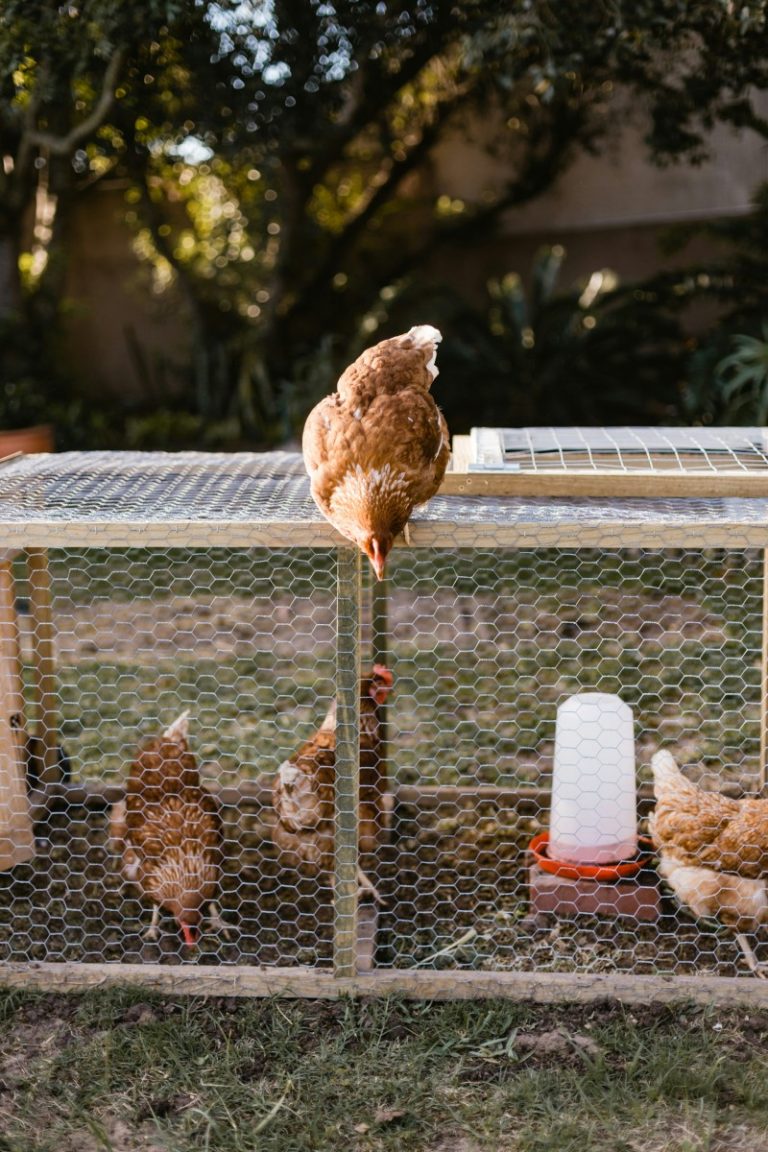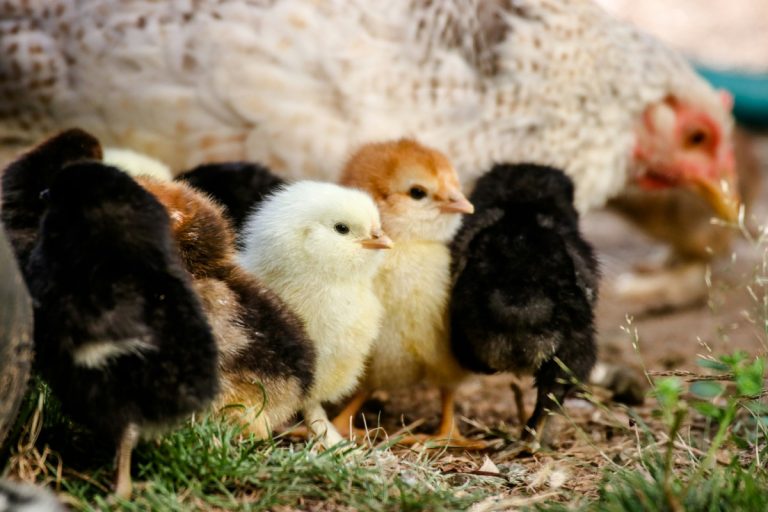How to Keep Chickens Warm in Winter (10 best ways)
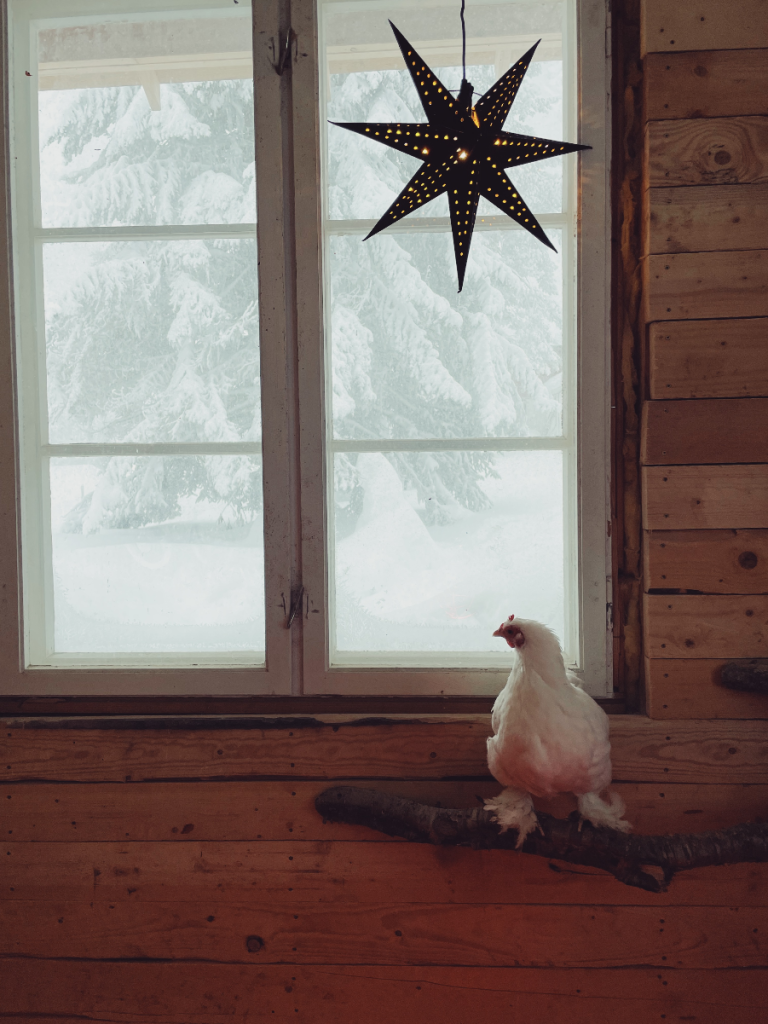
Storytime
It pains me to admit this, but our chickens spent their entire first winter locked up in a cold and dusty coop. We got our adult flock in spring and they would spend all day outside. Roaming the garden, bathing, snoozing in the shade under our bushes or patio, and hunting for food high and low. I didn’t feel like their coop had to be particularly comfortable. They hardly spent any time there. But I quickly had to find out how to keep our chickens warm in winter.
Skip to our 10 Ways to Ensure Your Chickens Are Warm in Winter here.
Beyond Just Eggs and Meat
Keeping chickens goes beyond just eggs and meat. We want to ensure they have a wonderful life and are fed in a healthy and sustainable way. However, we didn’t anticipate the challenges that would arise when the first snowfall arrived. It turned out that our chickens were not fans of the cold and snow, and I suspect our dramatic rooster, Vegard, had a hand in it. If he proclaimed the white stuff as the devil’s work, the hens unquestioningly agreed.
Living in Central Norway means we experience heavy snowfall and extremely low temperatures. So, while I felt guilty about keeping them confined to a small brick room all winter, at least I knew they were protected from frostbite. However, we struggled to keep their coop warm enough for comfort. Their water froze daily, and the lack of proper ventilation was an issue. I made a promise to them (and myself) that they would never have to endure another winter like that.
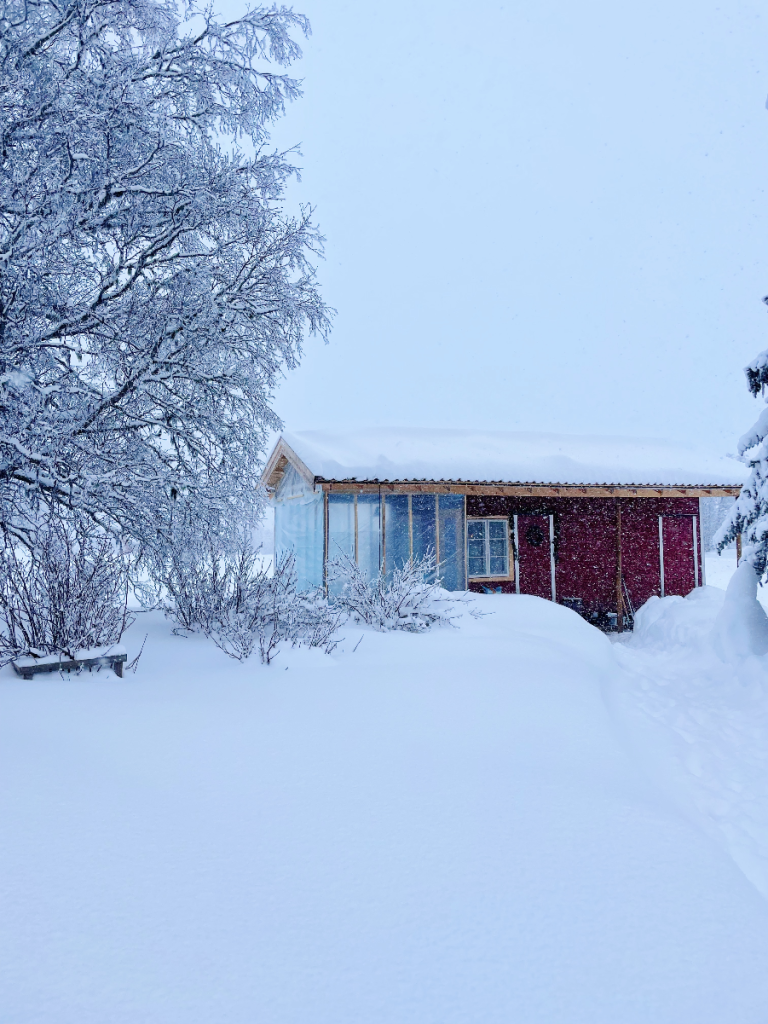
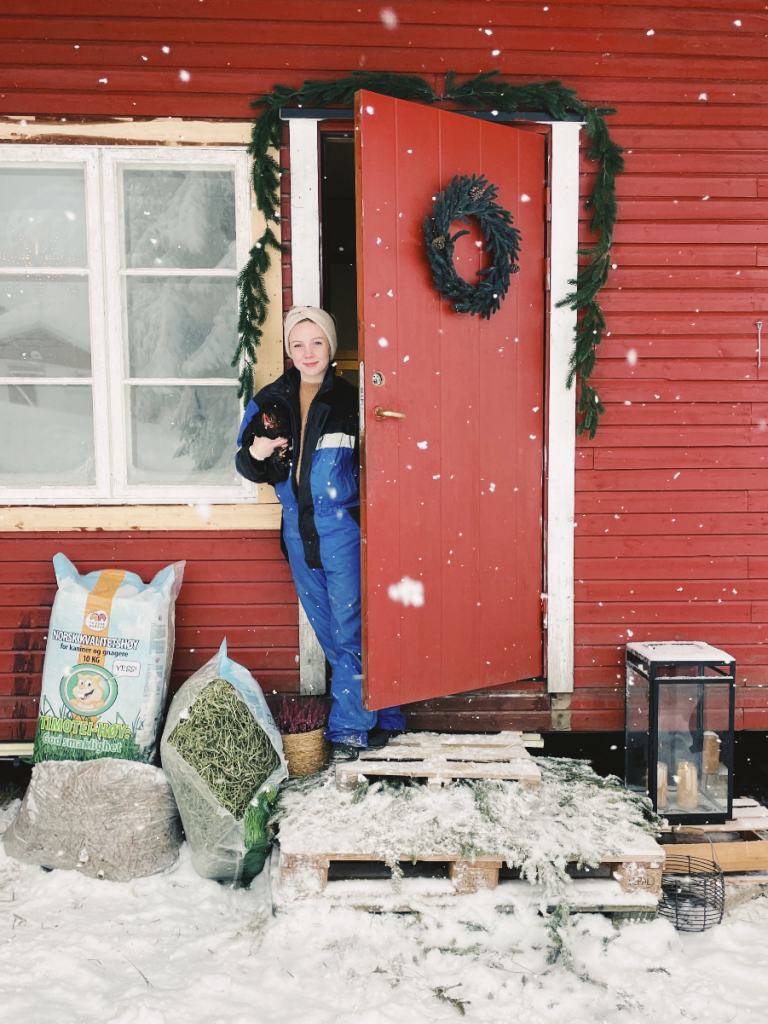
10 Ways to Ensure Your Chickens Are Warm in Winter
As the winter months approach and the cold weather begins to settle in, raising chickens in cold climates presents a new set of challenges for both new chicken owners and seasoned chicken farmers alike.
Consider a variety of strategies to keep your chickens warm in winter. We share our proven methods of winterizing the chicken coop and run.
1. The Deep Litter Method
The Deep Litter Method is a fantastic way to keep your chickens warm and comfortable throughout the year. By layering wood chips, wood shavings, or straw bales on the coop floor, you create a cozy and self-heating environment.
As the chickens’ droppings mix with the litter, a natural composting process occurs, generating heat. This heat acts like underfloor heating, providing a toasty atmosphere for your feathered friends. During the winter months, the deep litter method can help maintain a comfortable temperature inside the coop, ensuring your chickens stay happy and healthy.
However, it’s important to remember that proper ventilation is essential to prevent respiratory issues. Also, in spring the litter can be composted to create nutrient-rich soil for gardening. It can be used as mulch to suppress weeds, improve moisture retention, or as bedding for other animals. The possibilities are endless!
2. Insulation
Insulating your chicken coop is a smart move to keep the cold weather out. You can use stuff like straw bales, pine needles, or wood shavings placed strategically for awesome insulation both inside and outside in the run. These natural goodies act as cozy thermal blankets, soaking up heat during the day and keeping things toasty at night. They also block chilly winds, creating a warm and snug space.
Winter brings low temps, dryness, and moisture challenges for your chickens. But with a well-insulated coop and good ventilation, you can tackle those issues. Insulation keeps the cold away and preserves the body heat your chickens generate. Insulate walls and ceiling to avoid losing warmth. In places like Norway, folks use wind barrier paper and glass wool insulation (Glava). Reflective or bubble foil insulation works too. Stick foil behind roosting spots and on the ceiling for extra cozy vibes during long winter nights.
A well-insulated coop means happier, healthier chickens and more eggs. It saves on electricity and gives flexibility in rough weather. Some upfront costs for materials like straw bales or reflective foil are worth it. Your flock will thrive, and you’ll have a cozy, cost-effective setup. So go ahead, insulate that chicken coop and give your feathered pals the comfort they deserve.
3. Heat Lamps and Bulbs
When the temperatures drop, chickens appreciate a warm and comforting light to snuggle under. Heat lamps and bulbs are a popular choice for providing that extra warmth during particularly chilly nights. For instance, a heat lamp suspended above the roosting area can create a cozy spot for your chickens to gather and keep warm.
However, it’s crucial to prioritize safety when using heat lamps. Ensure they are securely installed and positioned away from flammable materials. Additionally, it’s wise to have a backup plan, such as battery-powered heat sources, in case of power outages.
In the wild hens will roost in trees to stay safe from predators on the ground. And we know that heat rises, so it’s a good idea to place the roosts quite high. Just make sure to create a way for them to get up there. The roost is usually a few degrees warmer than the floor. We therefore keep the lamp in the middle of the room, over the floor where we keep the water, and only turn it on when it gets really cold.
4. Fresh Water
Providing fresh water to chickens is crucial, even in cold weather. However, water bowls tend to freeze quickly, leaving your chickens without a hydration source. To prevent this, consider using a heated waterer specifically designed to keep the water from freezing. These heated waterers use electricity to maintain a constant temperature, ensuring that your chickens have access to liquid water.
Another option is to place a heat bulb near the water bowl to provide enough warmth to prevent freezing. Remember to check the water supply daily and refill it as needed to keep your chickens well-hydrated throughout the winter.
5. Chicken Run Winterization
Winterizing the chicken run is essential to protect your flock from harsh weather conditions. One effective method is to use a see-through tarp or clear plastic to cover the chicken run. This allows sunlight to penetrate during the daylight hours, creating a greenhouse effect that can warm up the area even on chilly days. The tarp or plastic acts as a barrier against wind, rain, and snow, providing a sheltered space for your chickens to roam and stretch their wings during winter storms.
By winterizing the chicken run, you create a pleasant and protected environment for your birds, ensuring their well-being throughout the colder months.
Data suggests that Vegard would possibly starve to death before going into the snow. So creating a comfortable run was paramount in helping them find confidence outside despite the cold weather. As soon as the first snow falls we start shoveling it up against the walls of the run. Snow is a fantastic insulator. So if you’re in an area with lots of snow use that to your advantage. Shovel it as high and thick as you can (without making it easier for predators to get in that is).
We put down a little bit of hay and straw at the beginning of the winter season. But throughout the winter I throw the dropping from the coop right out the window into the run together with wood shavings, straw and feathers. The flock spends a lot of time going through this dirt an additional time, spreading and airing it – great for creating compost or mulch.
6. High-Energy Foods
During winter, chickens burn more calories to maintain their body temperature. Supplementing their diet with high-energy foods can help provide the extra protein and energy they need. Scratch grains, mealworms, and black oil sunflower seeds are excellent options to incorporate into their diet. These foods are rich in essential nutrients and fats that can help keep your chickens warm and nourished.
Additionally, offering a warm mash on cold winter nights is a great way to provide a comforting and nutritious meal for your feathered friends. The warm mash can be made by mixing warm water with their regular feed, creating a hearty and easily digestible treat that is much appreciated by your chickens during the colder months.
7. Coop Design
The design of your winter chicken coop plays a crucial role in maintaining a warm and comfortable environment for your flock. When designing or modifying the coop, consider a few key factors. Firstly, avoid using concrete floors as they can be colder than the ground, leading to discomfort for the chickens. Instead, opt for materials like wood or dirt floors that provide better insulation.
Additionally, ensure that the coop has enough space to accommodate all the chickens without overcrowding. Overcrowding can lead to pecking order issues and increased stress, which can negatively impact their well-being. Lastly, proper ventilation, proper ventilation, proper ventilation!
8. Breed Selection
When choosing chickens for cold winters, selecting cold-hardy breeds is advantageous. Certain breeds are naturally more tolerant of low temperatures and can withstand the cold better than others. Look for breeds with smaller combs and wattles, such as Ameraucanas or Sussex. These breeds are less prone to frostbite, as their smaller combs and wattles are less exposed to the cold air.
By choosing cold-hardy breeds, you provide your flock with a better chance of thriving and staying healthy during the winter months.
9. Petroleum Jelly
In cold weather, chickens with large combs and wattles are particularly susceptible to frostbite. To protect them, a simple yet effective preventative measure is applying petroleum jelly to these areas. Petroleum jelly acts as a barrier against the cold air, helping to insulate the comb and wattles and prevent frostbite.
Before the onset of winter, apply a thin layer of petroleum jelly to the comb and wattles of vulnerable chickens. Reapply as needed throughout the winter season to ensure continuous protection. This inexpensive and readily available solution can significantly reduce the risk of frostbite and keep your chickens comfortable and healthy, even in chilly conditions.
10. Nesting Boxes
Ensuring comfortable nesting boxes for your hens is essential to maintain their egg production during the winter months. By providing extra straw or pine shavings in the nesting boxes, you create a cozy and inviting environment for your hens to lay their eggs.
The added bedding not only offers insulation but also keeps them off the cold coop floor, providing a warmer and more comfortable spot for egg-laying. Consider regularly refreshing the bedding to maintain cleanliness and freshness. A comfortable hen is more likely to feel secure and at ease in her nesting box, which can positively impact her egg-laying behavior.
Remember to check the nesting boxes frequently and collect the eggs promptly to prevent them from getting too cold. By prioritizing the comfort and warmth of your hens in the nesting boxes, you contribute to their overall well-being and encourage consistent egg production throughout the winter season.
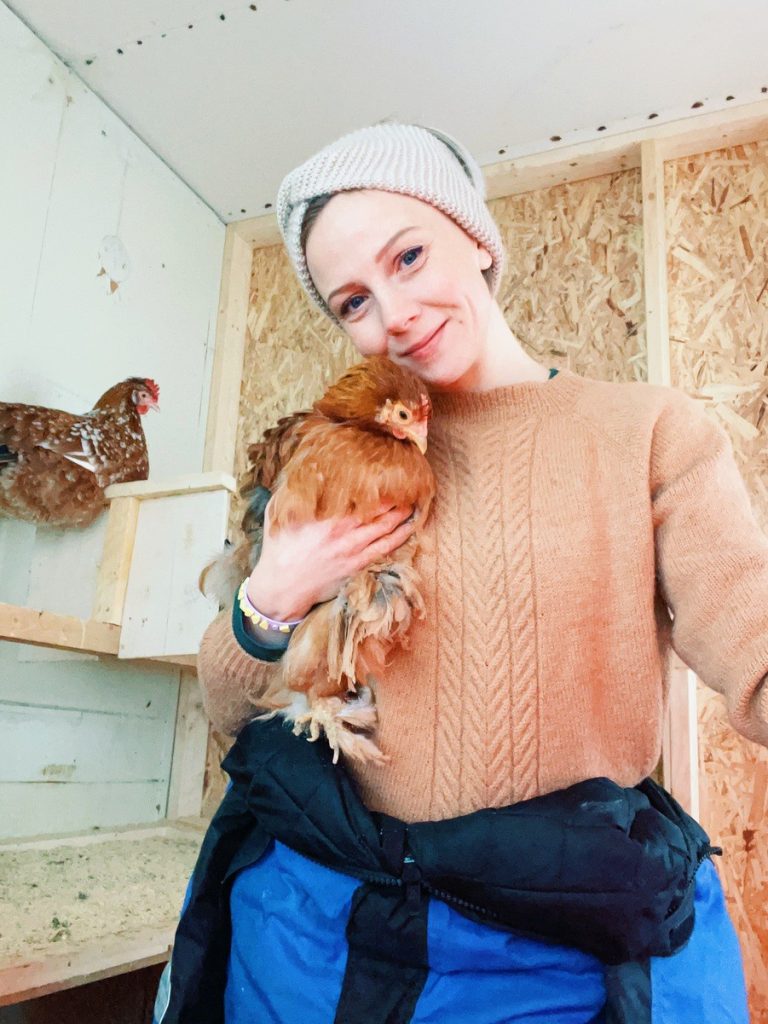
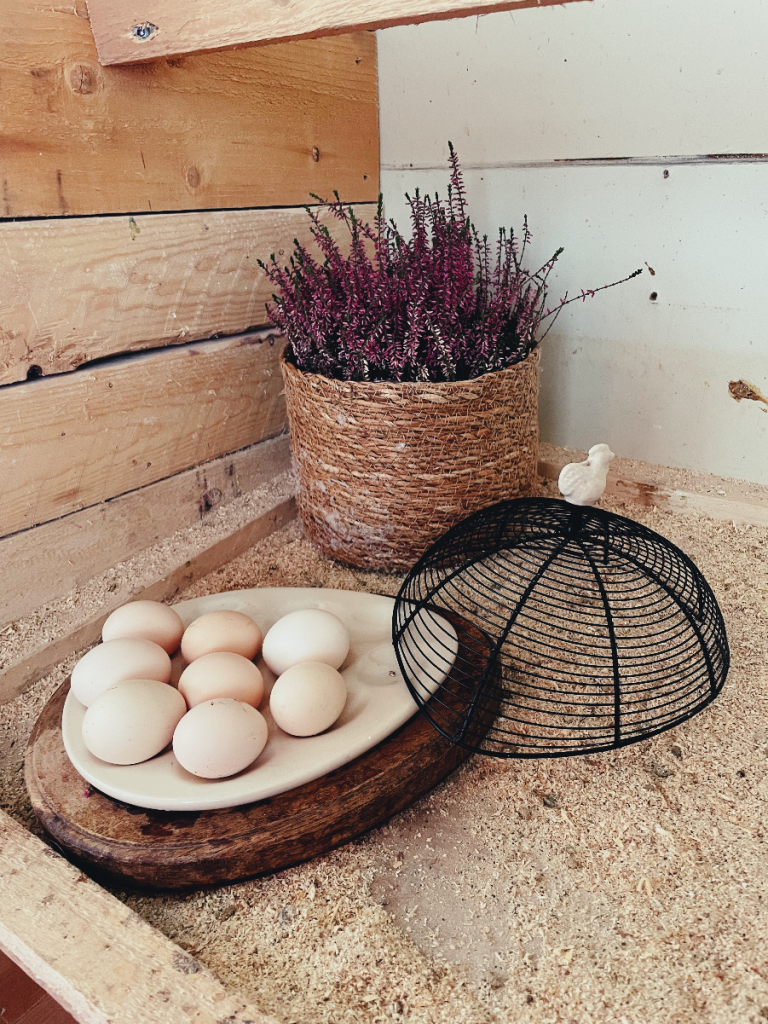
Buy Yourself Some Freedom!
We recently made the decision to purchase this automatic door for our chicken coop, and although I still have some reservations about fully trusting it, it hasn’t let us down so far. We opted for a door from Kerbl, which appeared to be a well-built product suitable for our climate.
It offers customizable features, such as daylight- and time-dependent control, as well as the ability to differentiate between weekdays and weekends. The door also boasts excellent safety features and can be powered by both batteries and mains electricity.
I added a leather strip curtain on the inside of the coop door to retain some heat when it’s open. However, on the first night, the entire flock ended up outside as they ventured through the curtain but couldn’t find their way back in. To solve this, I tied up two middle strips, allowing them to see the light and find their way back. Now, I’ve let the strips hang again without any issues.
Initially, the male rabbits lived with the chickens, so I chose a natural material to prevent chewing. However, heavy-duty plastic could also work for chickens once they figure out how to move through it.
As homesteaders, we know that happy animals are also the most productive. When it comes to living creatures, productivity can’t be measured by mere numbers of eggs or pounds of meat. The measurable nutritional values of the products are one thing, the love and care exchanged between humans and animals, however, is something very different. Check out our detailed post on How Much Space Chickens Need to ensure yours are the happiest and most productive they can be.
Planning for Flexibility
When we moved to our farm in 2018 with our newborn son, we didn’t know anyone in the area. Despite this, we have strong connections with our families and friends, which means we often travel. We needed to establish reliable solutions for security, food, water, and heat that would keep our chickens content even when we were gone for a weekend.
At last, we have achieved this goal. We can now leave knowing that our chickens will be well taken care of for a couple of days, even if the temperature suddenly drops. Creating safe, easy-to-clean, and low-maintenance housing for our animals has truly been a game changer. It’s one thing keeping chickens warm in winter. It’ll be interesting to see if we can do the same for a couple of pigs and a milk cow though…
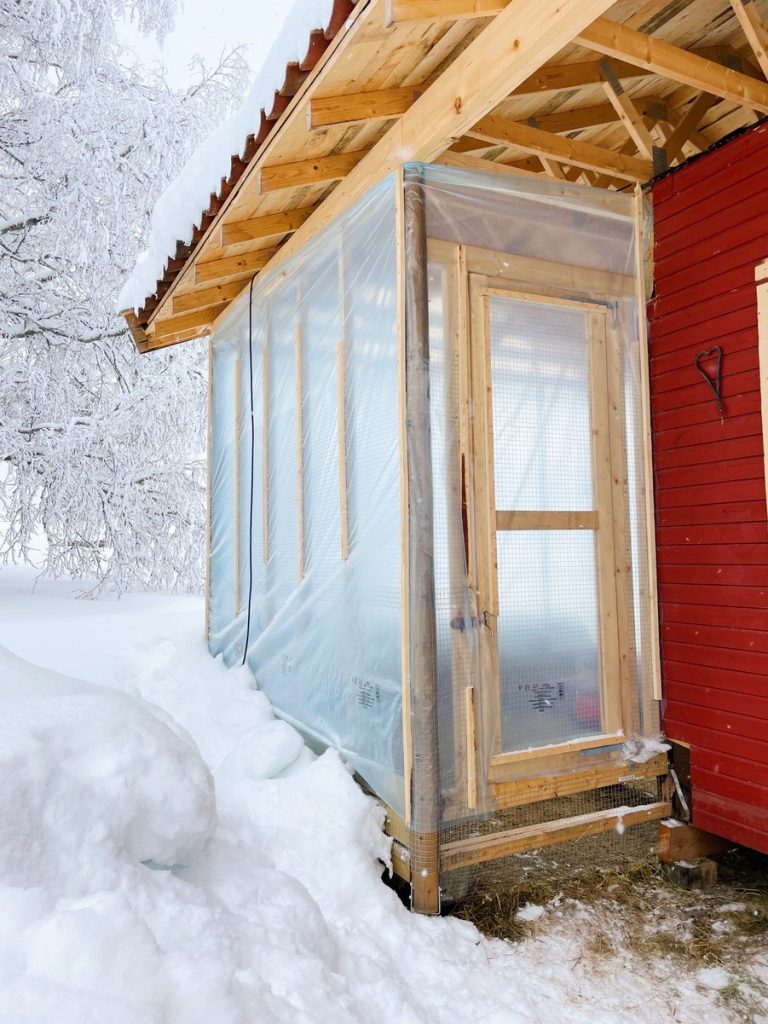
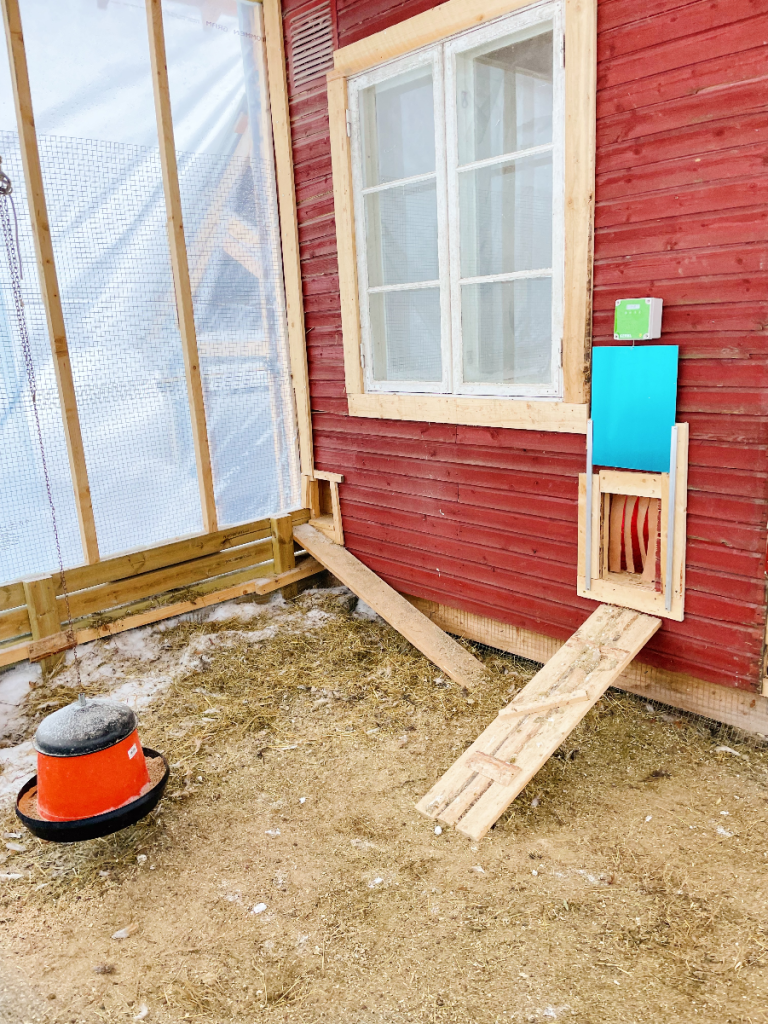
It’s Worth It
Keeping your chickens warm in winter is initially a bit of an undertaking. But trust someone who’s lived with the burden of worrying about the well-being and health of her flock; it’s worth it. I used to dread going out to the coop at night. It was such a hassle with the icy water and the struggle to contain some of the little heat we managed to get out there.
Now the coop is my haven. My peaceful little part of the farm where I can enjoy the calming sounds of happy chickens, collect the freshest, best-tasting eggs, and find inspiration for new projects. I feel like a pro!
When it comes to keeping your chickens warm in winter, there are a few simple steps you can take. Winterizing your coop and run, choosing the right breed, and adjusting their diet are all important. Don’t forget to connect with local chicken keepers for personalized advice. Remember, it’s not just about having chickens, it’s about giving them a great life filled with warmth and lots of love. And eating all the fresh eggs! So take some time to prepare, learn from experience, and find what works best for your flock.
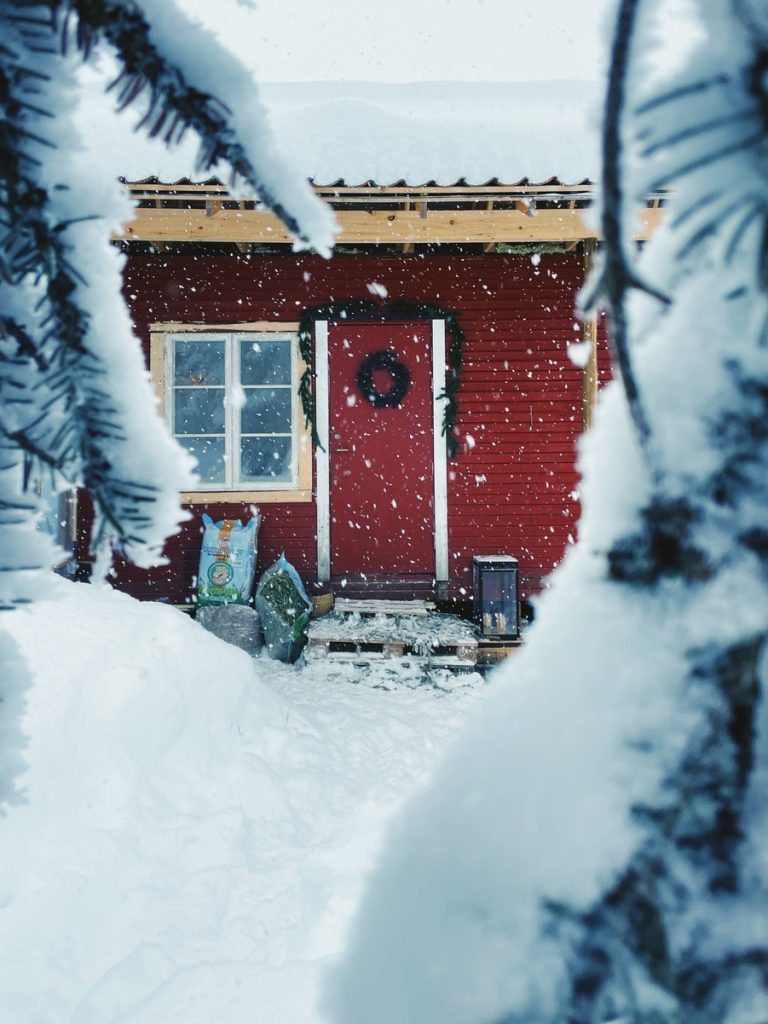
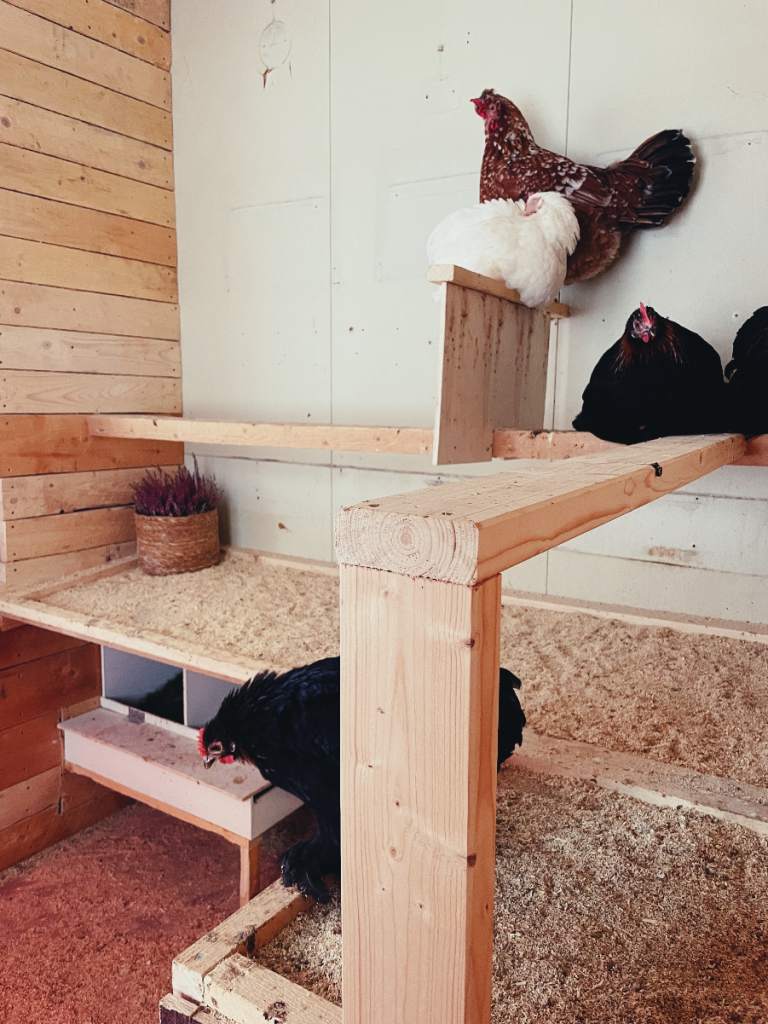
Would You Consider Joining Our Flock?
Thank you so much for taking the time to read this post about keeping chickens warm in winter.
Please leave a comment below if you have any questions or suggestions for us to try out and add to this post! Or contact us directly here. We update our blog every week with news, tutorials, tips and tricks from our Heimastead life. Hope to see you here again soon!
Share this with someone who’d love it!

